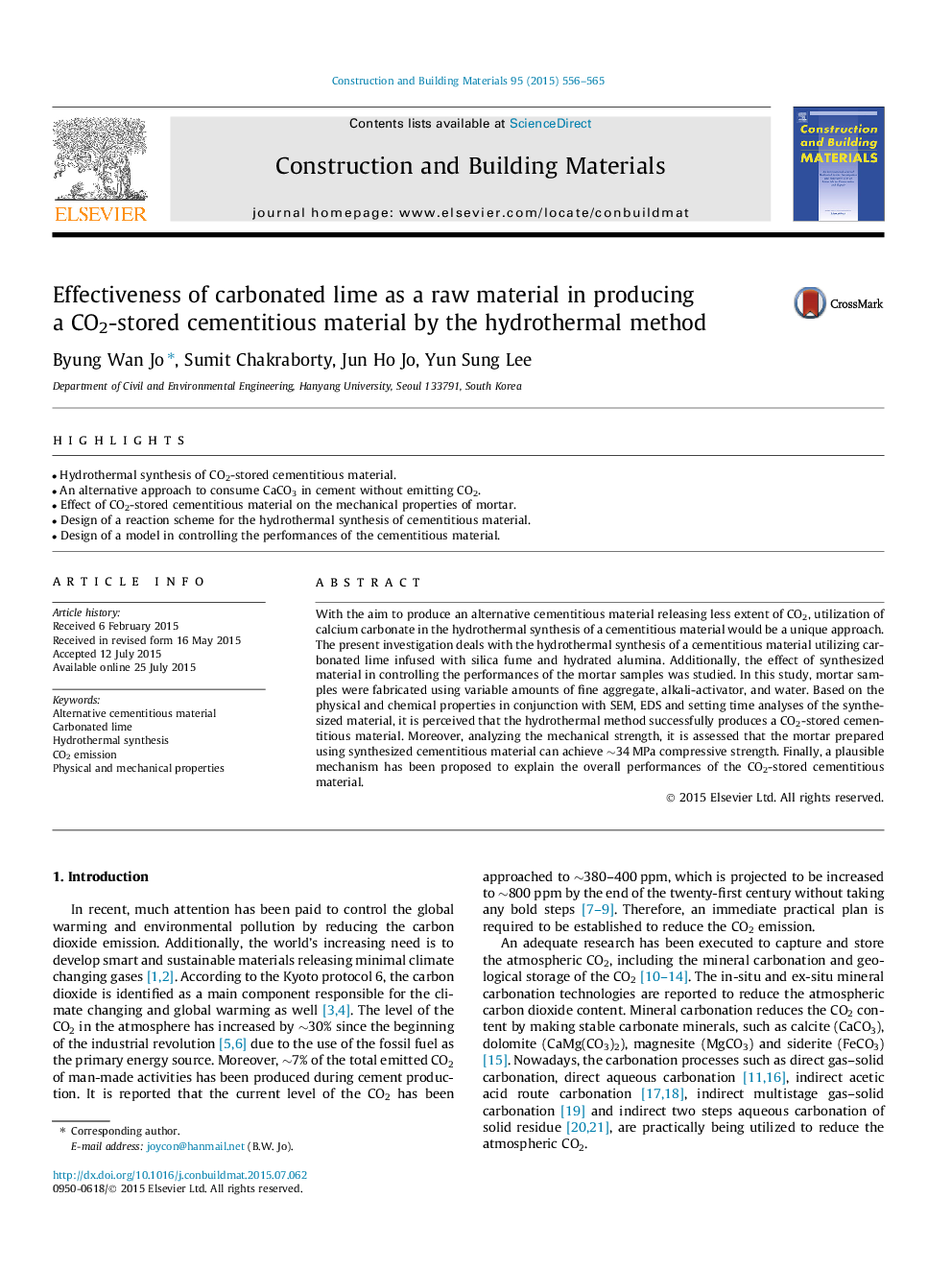| Article ID | Journal | Published Year | Pages | File Type |
|---|---|---|---|---|
| 256808 | Construction and Building Materials | 2015 | 10 Pages |
•Hydrothermal synthesis of CO2-stored cementitious material.•An alternative approach to consume CaCO3 in cement without emitting CO2.•Effect of CO2-stored cementitious material on the mechanical properties of mortar.•Design of a reaction scheme for the hydrothermal synthesis of cementitious material.•Design of a model in controlling the performances of the cementitious material.
With the aim to produce an alternative cementitious material releasing less extent of CO2, utilization of calcium carbonate in the hydrothermal synthesis of a cementitious material would be a unique approach. The present investigation deals with the hydrothermal synthesis of a cementitious material utilizing carbonated lime infused with silica fume and hydrated alumina. Additionally, the effect of synthesized material in controlling the performances of the mortar samples was studied. In this study, mortar samples were fabricated using variable amounts of fine aggregate, alkali-activator, and water. Based on the physical and chemical properties in conjunction with SEM, EDS and setting time analyses of the synthesized material, it is perceived that the hydrothermal method successfully produces a CO2-stored cementitious material. Moreover, analyzing the mechanical strength, it is assessed that the mortar prepared using synthesized cementitious material can achieve ∼34 MPa compressive strength. Finally, a plausible mechanism has been proposed to explain the overall performances of the CO2-stored cementitious material.
